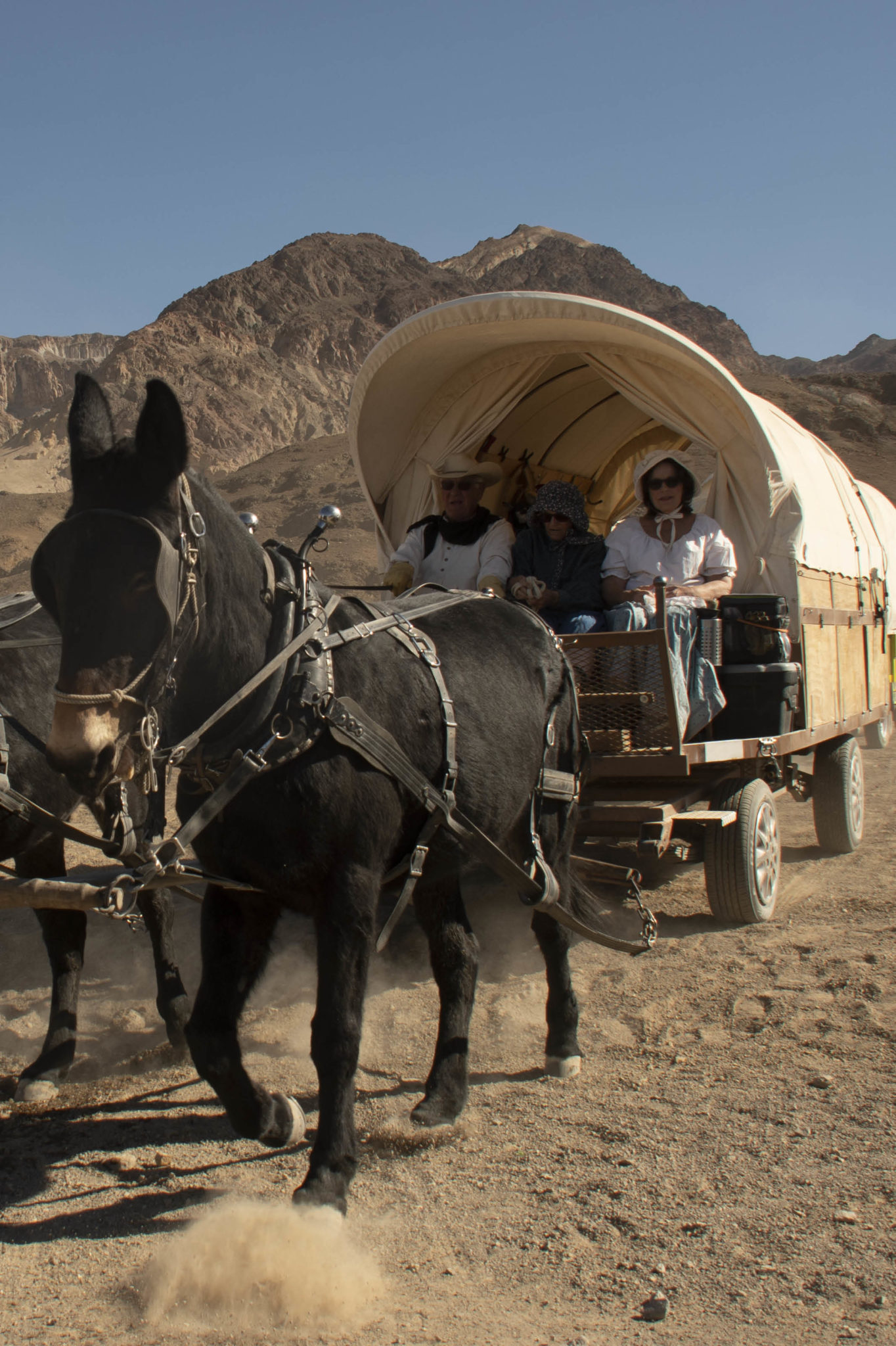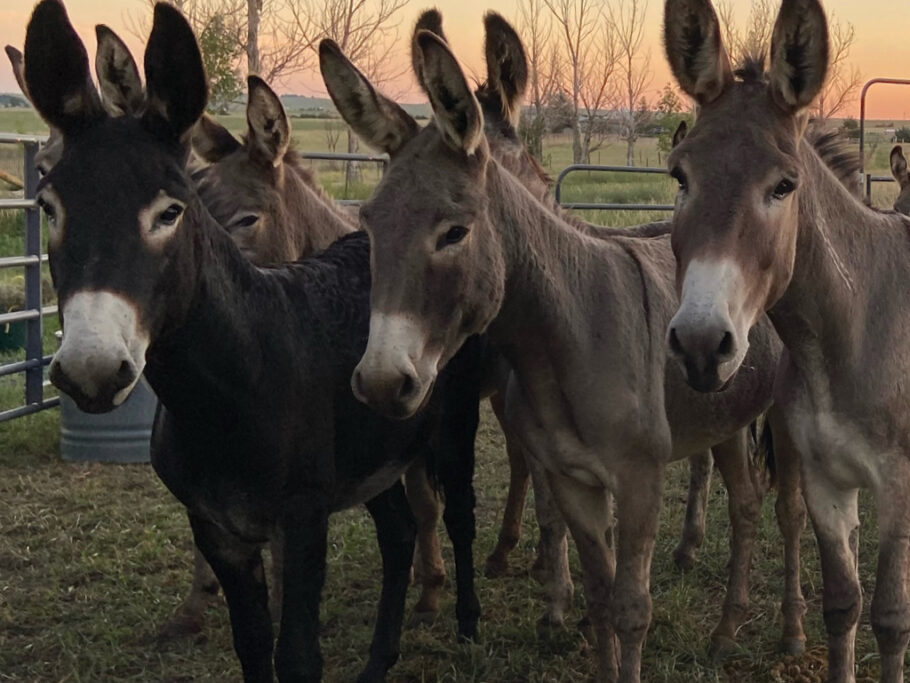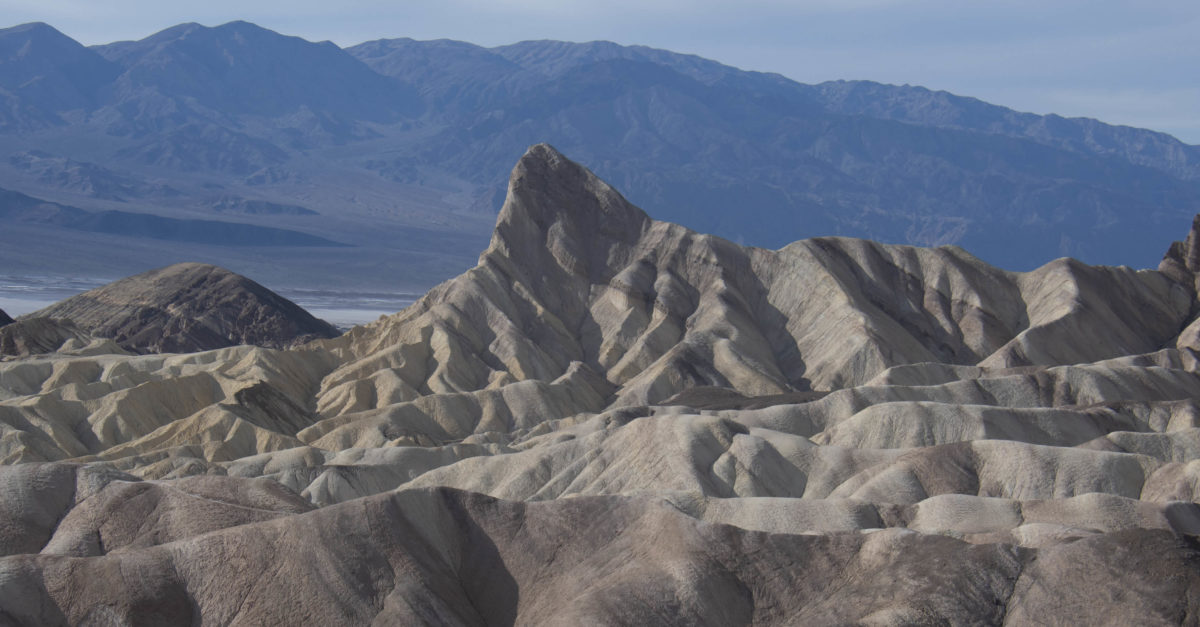Death Valley Days
It’s November, but here in Southern California’s Death Valley National Park, it feels like July. And under sunny skies in the park’s Furnace Creek village comes a sight rolling down the road right out of the 1880s—a twenty-mule team pulling a tandem set of giant freight wagons, identical to the ones that once hauled tons of borax out of Death Valley more than 130 years ago. This historical recreation is the work of the nonprofit Death Valley Conservancy.
“We thought it was important to preserve history,” says conservancy president Preston Chiaro, “so we began a fundraising project to re-create these wagons.” After eight years of fundraising to raise the half-million dollars for the project, the giant freight wagons made their public debut in the 2017 New Year’s Day Rose Parade. And they’re rolling again here as Death Valley celebrates its twenty-fifth anniversary as a national park. Borax mining made this ruggedly beautiful area of the Mojave Desert famous in the 1800s. One of the last remaining (but inoperable) original freight wagons is displayed at the crumbling adobe walls of the park’s Harmony Borax Works, the nineteenth-century plant that refined raw borax ore before it was hauled away on the wagons 165 miles to the railroad at Mojave, California. Train tracks eventually reached Death Valley, replacing the twenty-mule teams by the late 1880s.
Photography by Mark Bedor
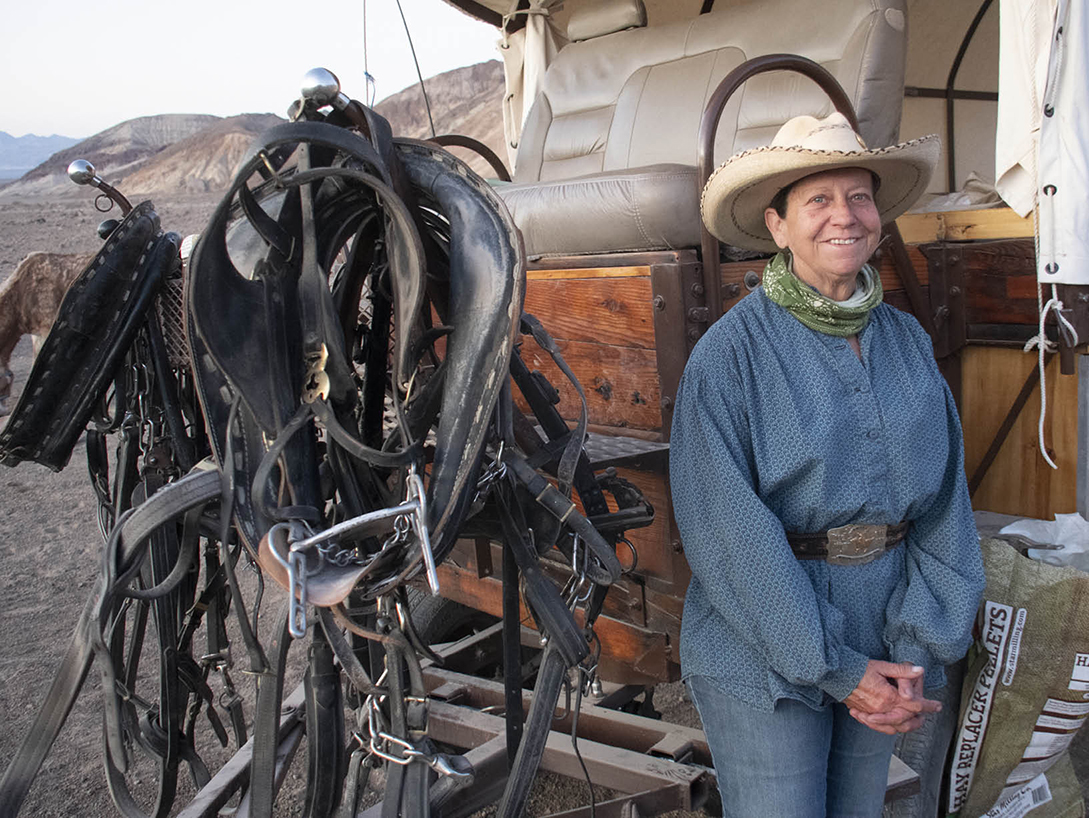
But the legend lived on. Twenty Mule Team Borax, the brand name of a once popular laundry product, was the longtime sponsor of Death Valley Days, the TV western.
Death Valley’s Old West roots have long been a draw to visitors fascinated with that era. Death Valley earned its grim name in 1850, when a wagon train looking for a shortcut into California became trapped here, unable to find a way across the towering, 11,000-foot Panamint Mountains bordering the valley’s western slope. Two men walked hundreds of miles to Mission San Fernando in Los Angeles to get help. When the wagon train finally did escape, one looked back and exclaimed, “Goodbye, death valley.” And the handle stuck. The memory of those hardy pioneers has long been celebrated here. An organization known as the Death Valley ’49ers just celebrated their seventieth annual gathering in 2019. And Corral #14’s ten-day Death Valley Wagon Train has been rolling through about one hundred miles of the park every November since 1967.
Corral #14 is the wagon-train chapter of Equestrian Trails Incorporated, better known as ETI, an organization that is dedicated to horsemanship and the preservation of riding trails on public lands. About a dozen of its horse-and-mule-drawn wagons made the trek during my visit. A week spent driving a team of horses and camping in the desert definitely gives you a sense of the rugged life on a wagon train. “We’re doing this with support trucks and everything,” says participant Jack McGee. “The pioneers did this with wagons. And the Mormons did it with handcarts! It just blows me away. You don’t realize until you get out here and start doing it how much work it is.”
We don’t give a thought to hopping into the car, turning the key, and stepping on the gas. Horses and mules have minds of their own, requiring training, harnesses, and hitches, plus proper care, food, water, and rest breaks. Plus, they only go four miles an hour. But that’s the appeal of wagon training. Spend time with those who love riding in a covered wagon, and you’ll hear over and over how all the hard work is worth it. It’s a rare chance to step out of the crazed pace of the twenty-first century and experience life at four miles an hour.
It’s one big, happy family, too. And that includes the beloved animals, who are treated with much affection. “I love being out here waking up with my horses,” shares wagon master Sue Martzolf of Corral #14, as she serves the morning meal to her animals. The wagon train caps off its trek by parading through Furnace Creek, following the big twenty-mule team freight wagons. It’s a treat for the delighted park visitors watching along the roadside, as cell phone cameras snap away, capturing this rare sight.
Photography by Mark Bedor
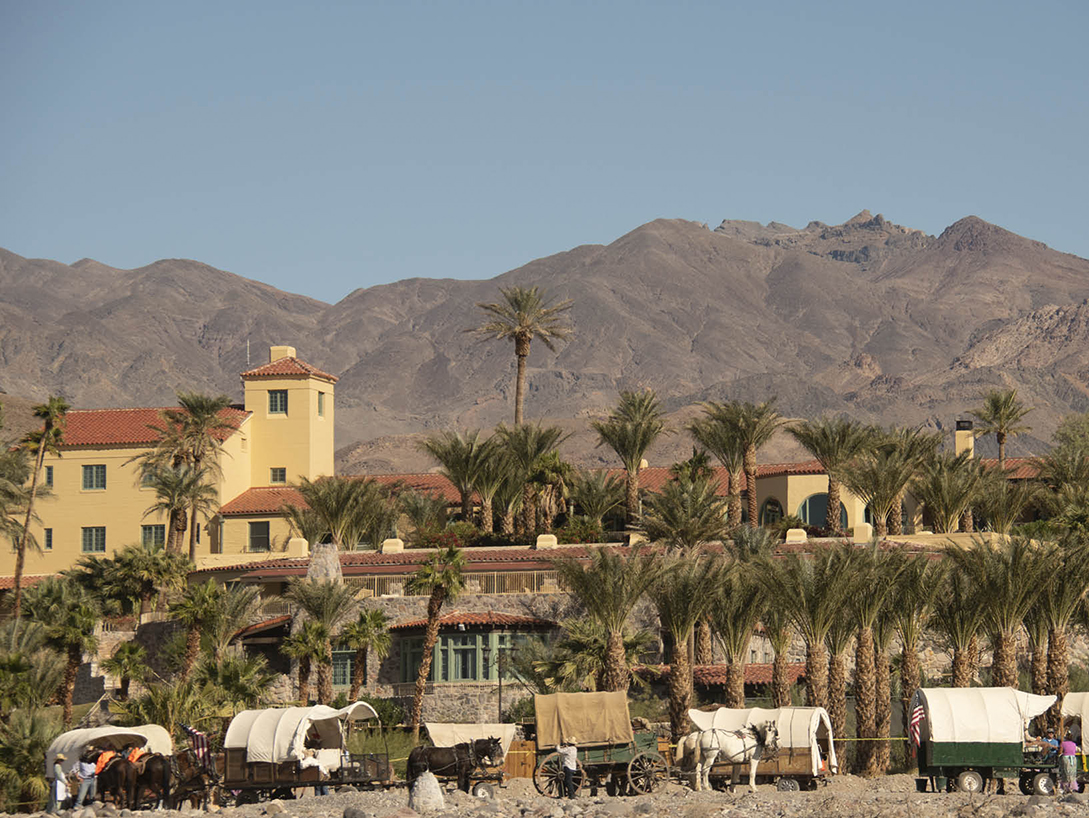
If it all makes you want to saddle up and hit the trail, you’re in luck. During the winter months, Furnace Creek Stables will be happy to give you a horseback tour of the desert, and beginners are more than welcome. The offerings include a moonlight ride. “You can see your shadow and the horse’s shadow as you going alongside the trail,” says stable owner Sam Moya. “And that’s pretty cool to experience.”
Riding the vast desert is a bit of a history lesson as well. Horses were once state-of-the-art transportation and a priceless partner for crossing the vast desert. Today, riding is a great way to simply relax and enjoy the splendid views of the vast desert valley and its towering mountains. “It’s a way to not have to look down at your feet while you’re hiking around and see what the park has to offer,” offers Moya.
Most visitors do explore Death Valley on foot. And with nearly 5,300 square miles, hiking opportunities are virtually unlimited. “You can hike just about anywhere here,” says ranger Abby Wines. “People sometimes think they’re limited to just a few trails that they see on the map. Those are a good place to get started because they’ll show you the easiest places to get to see something spectacular. But there’s an entire park out there.”
If your time is limited, you can experience the extremes of Death Valley by car. A short drive from Furnace Creek takes you to the fascinating site known as Badwater Basin. At 282 feet below sea level, it’s the lowest place in North America. Another direction quickly whisks you up to about 5,500 feet and Dante’s View. The overlook offers a spectacular panoramic vista of Death Valley, including Badwater Basin far below. Snowcapped Telescope Peak looms across the Valley from Dante’s, topping 11,000 feet.
Photography by Mark Bedor

Along the way, there are other popular and easily accessible landmarks, like Zabriskie Point, Natural Bridge, and a stretch of colorful rock formations through a stretch of road called Artists Drive. You can simply step out of the car and catch the view or hit the trail for a short hike. All of them offer astonishing sights in a landscape like none you’ve ever seen. “It’s absolutely beautiful—almost surreal,” marvels Kentucky hiker Rachel Hudson. “I read someplace that parts of Star Wars were filmed here. And I didn’t believe that there was a part of the world that could be so different and that could pass for another planet … until I got here.”
Photography by Mark Bedor
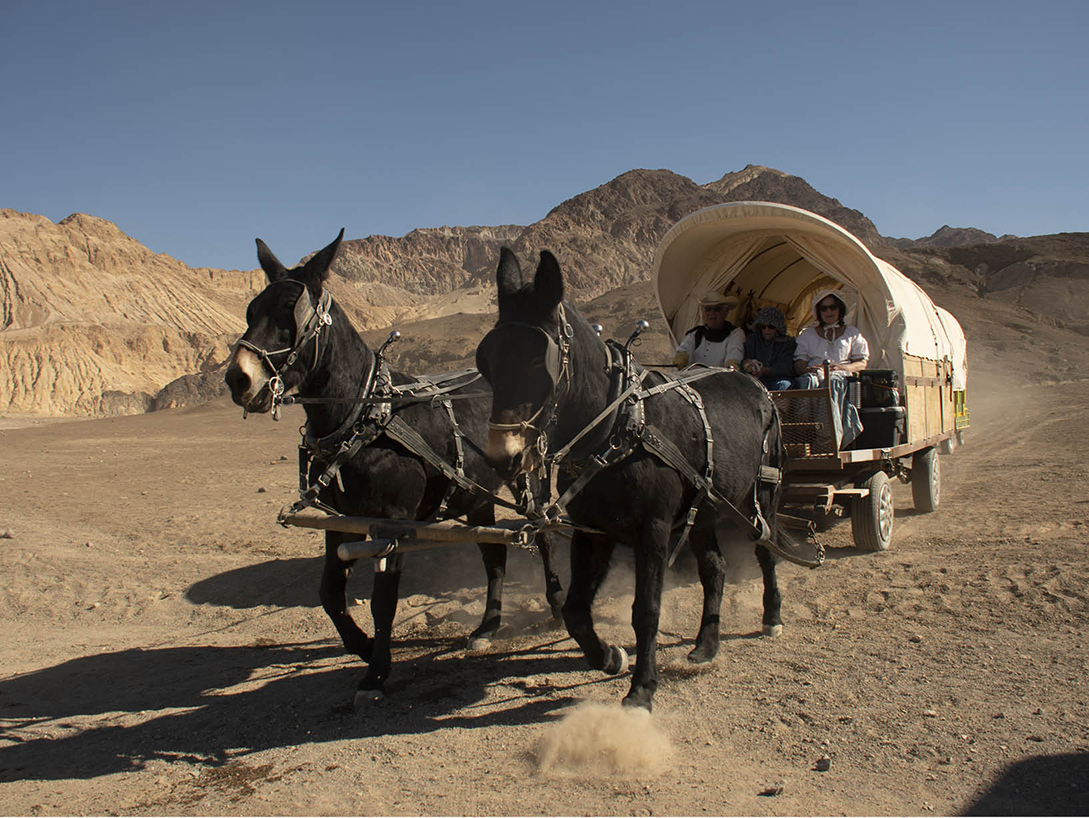
Cooler winter months are the time for ambitious hikes. But the park is also surprisingly busy during the scorching months of summer, when the overnight low can sometimes top one hundred degrees. “Death Valley is the most extreme part of the American West,” says Wines. “And if you’re coming from another country to experience the West, what better place to go than Death Valley in the summer?” Whatever season you choose to visit, you can pamper yourself at day’s end with a stay at the Inn at Death Valley. Built by the Pacific Coast Borax Company in 1927, the recently renovated inn’s historical charm, fine dining, unique setting, and magnificent park vistas offer a hotel experience unlike any other. Says the Inn’s Christine Sceppe: “Just to be able to come out into the middle of the desert, so far away from comfort and luxury, and still have it right next to you, is just the best of both worlds.”
It’s a place like no other: rugged, harsh, yet uniquely beautiful and peaceful, with quiet like you’ve never heard before. And it’s all in a vast national park without the crowds and congestion that plague so many others. It’s just waiting for you to come discover for yourself.
For more info, visit nps.gov/deva
